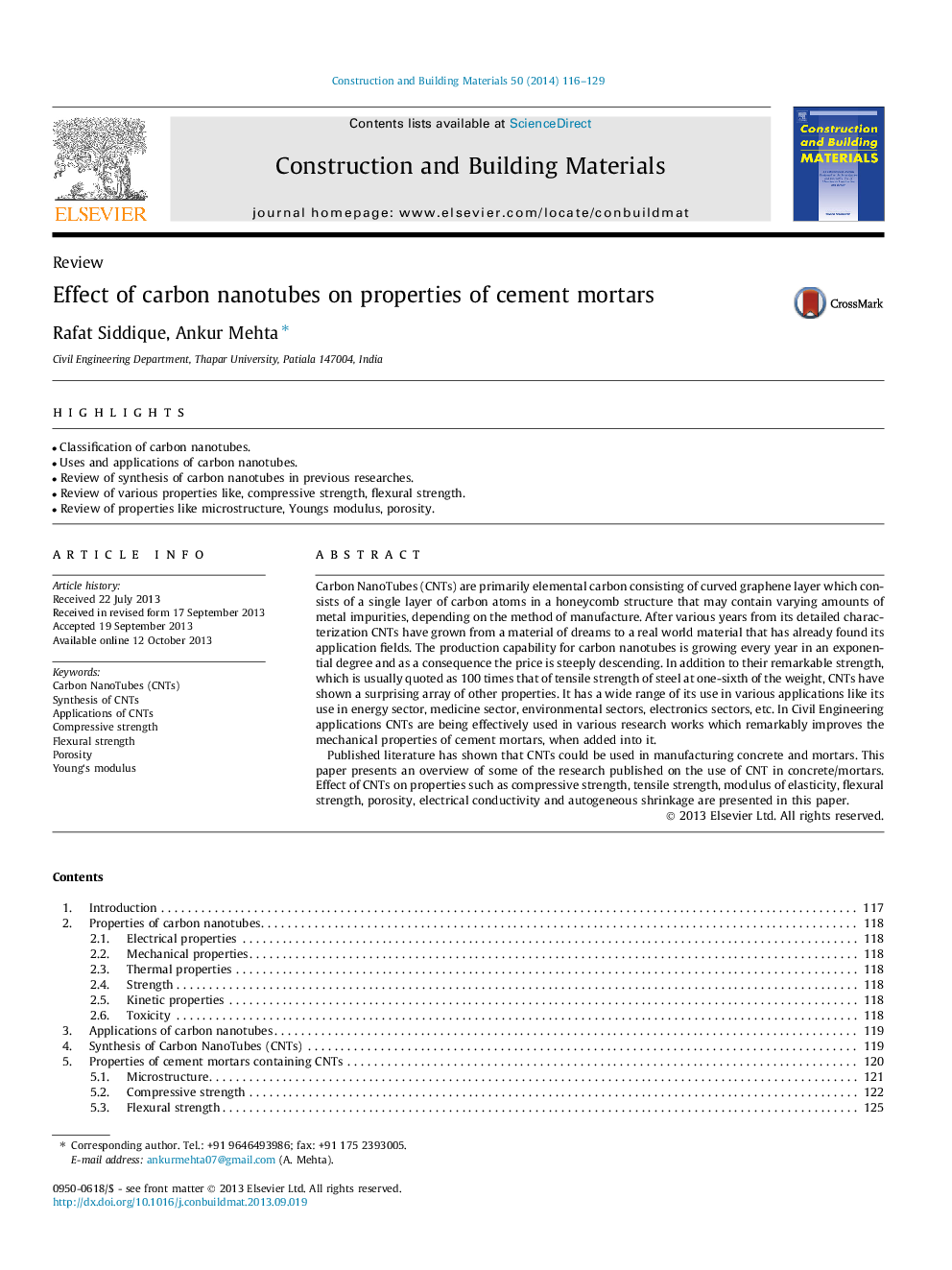| کد مقاله | کد نشریه | سال انتشار | مقاله انگلیسی | نسخه تمام متن |
|---|---|---|---|---|
| 257866 | 503602 | 2014 | 14 صفحه PDF | دانلود رایگان |
• Classification of carbon nanotubes.
• Uses and applications of carbon nanotubes.
• Review of synthesis of carbon nanotubes in previous researches.
• Review of various properties like, compressive strength, flexural strength.
• Review of properties like microstructure, Youngs modulus, porosity.
Carbon NanoTubes (CNTs) are primarily elemental carbon consisting of curved graphene layer which consists of a single layer of carbon atoms in a honeycomb structure that may contain varying amounts of metal impurities, depending on the method of manufacture. After various years from its detailed characterization CNTs have grown from a material of dreams to a real world material that has already found its application fields. The production capability for carbon nanotubes is growing every year in an exponential degree and as a consequence the price is steeply descending. In addition to their remarkable strength, which is usually quoted as 100 times that of tensile strength of steel at one-sixth of the weight, CNTs have shown a surprising array of other properties. It has a wide range of its use in various applications like its use in energy sector, medicine sector, environmental sectors, electronics sectors, etc. In Civil Engineering applications CNTs are being effectively used in various research works which remarkably improves the mechanical properties of cement mortars, when added into it.Published literature has shown that CNTs could be used in manufacturing concrete and mortars. This paper presents an overview of some of the research published on the use of CNT in concrete/mortars. Effect of CNTs on properties such as compressive strength, tensile strength, modulus of elasticity, flexural strength, porosity, electrical conductivity and autogeneous shrinkage are presented in this paper.
Journal: Construction and Building Materials - Volume 50, 15 January 2014, Pages 116–129
